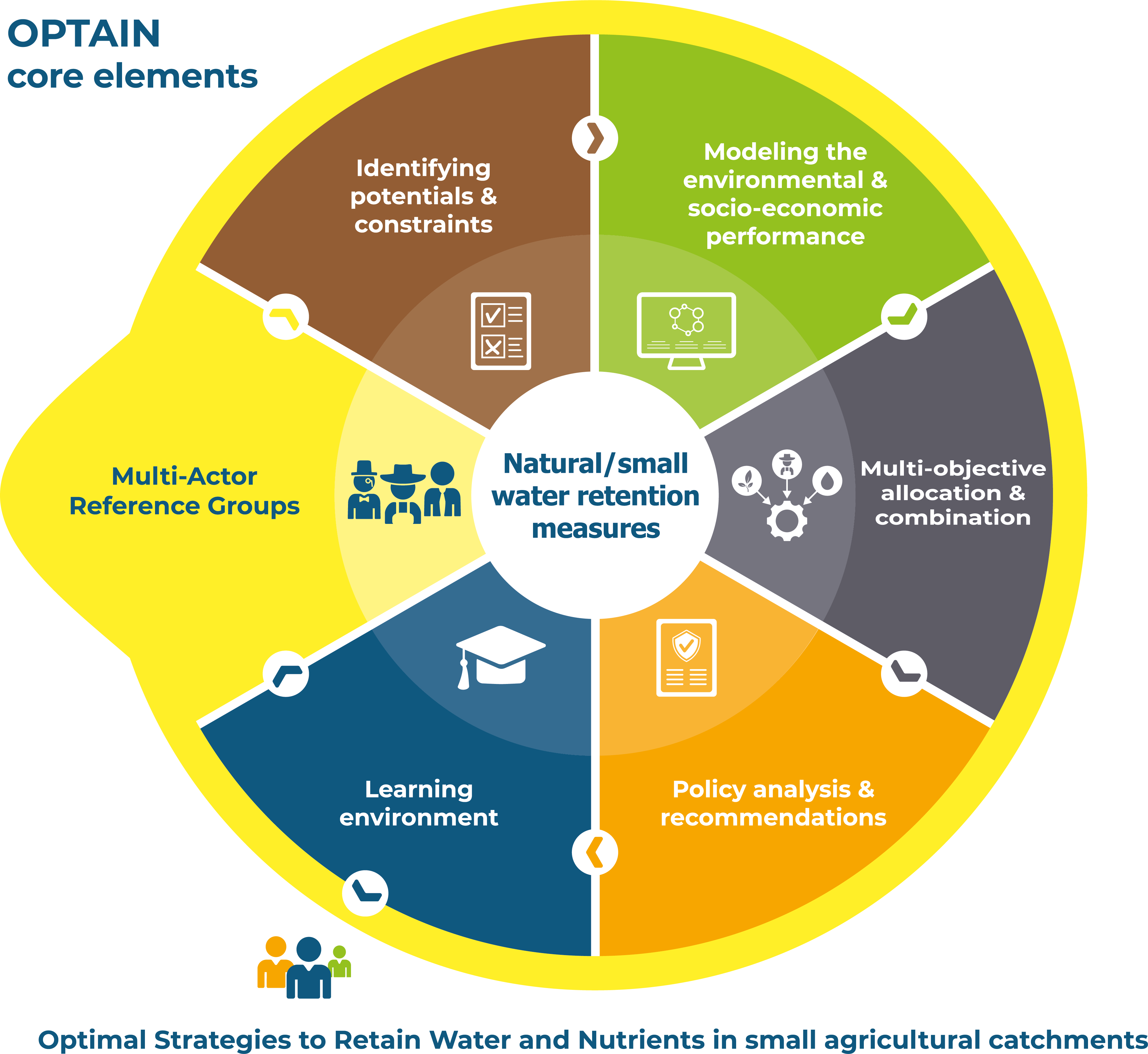OPTAIN aims to increase the knowledge and understanding of multiple benefits that spatially targeted combinations of NSWRM have on the management of small agriculture catchments across continental, Pannonian and boreal biogeographical regions of Europe, and on the conditions under which they perform most effectively.
OPTAIN aims to increase acceptance and better implementation of natural, small, and underutilized retention measures by showing under which weather/climate conditions, on which scale (field/catchment), on which location in the catchment and in combination with which other measures NSWRM perform best, considering environmental but also socio-economic indicators.
Why is it important?
NSWRMs can help to mitigate the conflicts between agricultural water uses (e.g. plant production, animals) and other human and environmental demands for water, including drinking water or maintaining environmental flow. This is crucial, since these conflicts will be probably exacerbated by an increasing number of extreme events such as droughts and heavy rainfall. A more careful management of head watersheds will significantly contribute to a more resilient agriculture and society. Despite a comprehensive set of techniques available to increase water retention on both catchment and farm levels, knowledge is still lacking on the conditions under which NSWRM perform best and how they are best combined with other measures. The OPTAIN approach will increase the acceptance and implementation of NSWRMs for an improved water and nutrient management, and a resilient agricultural production.
General presentation
OPTAIN will focus on 14 case studies across Continental (7), Pannonian (3), and Boreal (4) biogeographical regions of Europe, including one Pannonian-Continental cross-border case. All case studies represent small catchments (4.5-250 km²) dominated by agricultural land use, but cover a wide range of soil-climatic zones and agricultural systems. The distribution of case studies reflects well on the share of agricultural land within the different H2020 focus regions.
Within all 14 case studies specific local environmental issues will be addressed (including floods, droughts, soil erosion, nutrient leaching, crop yield losses), which aggravate conflicts between different local water users. OPTAIN will assess the site specific effects of a large set of NSWRM based on (1) operational experience and (historical) knowledge on the regional socio-environmental setting provided by MARG, (2) theory founded on reviewing existing literature and information systems (WOCAT, nwrm.eu) as well as (3) integrated modelling and multi-objective optimisation, while taking into account local projections of future climate. To ensure consistency and comparability amongst case studies, OPTAIN will aim for a comprehensive harmonisation and develop common protocols for all major approaches of the project.

Objectives
The general objectives of OPTAIN are to:
- identify efficient techniques for the retention and reuse of water and nutrients in small agricultural catchments across Continental, Pannonian, and Boreal biogeographical regions of Europe in close cooperation with local actors
- select NSWRMs at farm and catchment level and optimize their spatial allocation and combination, based on environmental and economic sustainability indicators.

Follow project OPTAIN
Subscribe to OPTAIN newsletter
